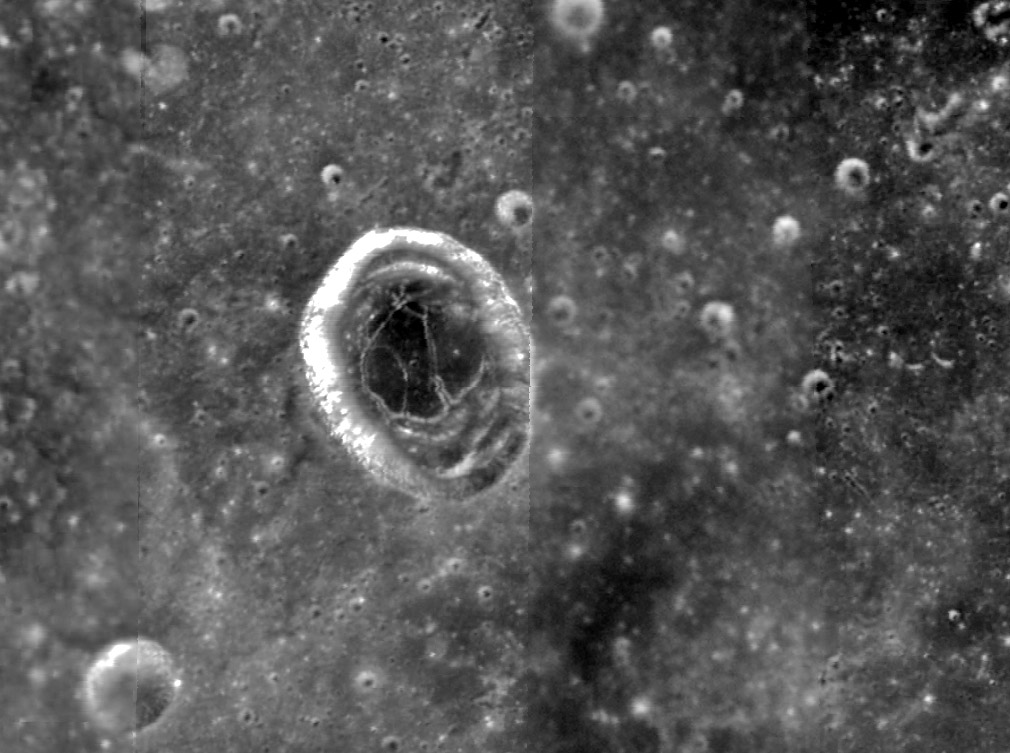
image by Clementine from USGS Map-A-Planet
While looking at Clementine images of the rille north-east of Posidonius I noticed for the first time the strange floor of the crater Daniell. This is an elongated crater 23 km across but 30 km long - it looks like massive slumps of the southern rim caused the lengthening. The smooth floor is darker than the nearby Lacus Somniorum and looks to be a plateau tilted downward to the north. The southern edge of the plateau is bright and therefore seems to be a scarp, and the same bright edge extends part way up a crack that cuts the middle of the floor from south to north. A few other curved cracks exist along the western and northern edges and a semi-circular one cuts the west side of the floor. I used the word crack because these features do not look like rilles. The largest cracks are about 1 km wide - within the grasp of high resolution amateur imaging. According to spectral mapping the floor is dark because it is covered by a deposit of volcanic ash like the dark spots in the crater Atlas. This may be but I am surprised that the pyroclastic dark material is tightly limited to the plateau and not noticeably on the surrounding slumps, rim or outside terrain. This is a very unusual crater. I speculate that the plateau is a few hundred meter thick pile of lava that was tilted by the southern slumps sliding under it. Possibly the same slump-induced uplift cracked the plate-like plateau. It is possible that pyroclastic material erupted through the cracks but I don’t see much evidence for that. I eagerly await the SMART-1 view of Daniell!
Related Links:
Rükl chart 14
Apollo 15 view
A Lunar Orbiter IV view
Yesterday's LPOD: Moving Sideways
Tomorrow's LPOD: A Dome or No Dome?
COMMENTS?
Register, Log in, and join in the comments.



